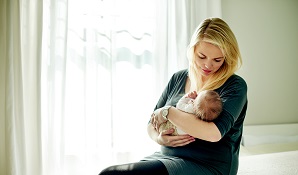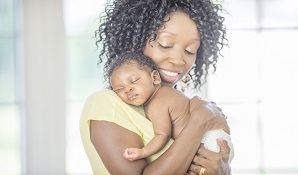This blog is part of our Weaving Wisdom series aimed at informing expectant parents about birth choices and encouraging proactive management of both the pregnancy and birth periods.
Byline: Louïne van der Vyver and Karin Steyn
Be empowered, ask your questions. Birth is your choice.
Dr Dheshni Naidoo is a gynaecologist with a special interest in natural birth at Linkwood Hospital in Johannesburg. According to her, each hospital and each doctor offers a different setting and a different way of delivery. She says that if you know what kind of a birth you want, and you want birth to be an empowering experience, it is important to ask the right questions to make sure that you and the doctor are on the same page about how birth should be.
Dr Naidoo gives some pointers:
- Your birth is your choice. Be pro-active and inform yourself well beforehand. Be comfortable with your choice.
- Go on the hospital tour. Find out what your intended birthing hospital will do or not do – does it fit in with your idea of a positive birth experience?
- Meet the midwives on staff and see if you feel comfortable.
- Is the hospital a lock-up setting (no family allowed in the labour ward) or may family enter with you and be allowed in the labour ward?
- Does your gynaecologist do natural deliveries? What are their stats? Should a gynaecologist deal with low and high-risk pregnancies, a 30% natural delivery rate is a good statistic.
- Does the doctor believe in active management of labour? In other words, will you be allowed to move around during labour, use a birth ball or other active birth aids, and be able to deliver baby in the position that comes naturally to you at the moment of birth?
- Will they allow a doula?
- Is episiotomy part of the standard routine? Episiotomy is a surgical cut in the perineum to enlarge the cervical opening. In modern practice it is deemed to be mostly unnecessary and likely to cause more damage than a natural tear.
- Where is baby post-delivery? Will you be able to keep your baby in the room with you, or will your baby be removed from you to stay in a nursery?
If you feel uncomfortable after the hospital tour, change your birth setting. This is why it is important to do the hospital tour even before you fall pregnant or directly thereafter.
Interventions you might encounter in hospital:
Induction:
In South African hospitals inductions are done after 41 weeks due to increased risk of your uterus deteriorating and possible growth restriction inside of the uterus.
- Risks of inductions: interference in labour may cause foetal distress, cause hyper-stimulation of the uterus (stronger more uncomfortable contractions), or lead to a cascade of interventions resulting in assisted delivery or caesarean section.
Epidural:
In hospital you can choose epidural pain management. This knocks out sensory fibres and you feel no pain, but doesn’t interfere with motor fibres, therefore not stopping contractions and allowing the use of your legs.
- Risks of epidural: it is valid for pain management, but it changes labour, alters contractions, reduces mom’s ability to work with contractions, therefore she sometimes requires further intervention and assisted delivery.
Spinal block:
This is a regional anaesthetic used in caesarean sections (C-sections) where there is lack of sensation and immobilisation from the waist down. It has to wear off before you can move, hours after birth.
Synthetic oxytocin Used in active management of labour when contractions slow down or to prevent heavy bleeding post-delivery. It doesn’t cause harm to baby or mother or breastfeeding.
Obstetric tools:
Forceps are rarely used today. Vacuum/kiwi is more common. It places suction on baby’s head to pull baby out of the birth canal when a C-section is not possible. It is used in late stages of labour when there are issues with delivering the baby, such as foetal distress or ineffective pushing by the mom.
C-section:
You can make the decision before your birth to choose an elective C-section due to medical conditions such as preeclampsia, a growth restricted baby, placenta previa or risk of aneurysm. You can also decide on a C-section when labour is not progressing, foetal distress or failure to progress in a VBAC.
- Benefits of a C-section: choice of date and time, exchanging pain of labour for pain post-delivery, minimal internal examinations, no foetal distress, no oxygen deprivation for baby.
- Risks of a C-section: undergoing major abdominal surgery, immobilisation, possible complications from spinal anaesthetic such as spinal headaches, injury to surrounding organs, bleeding from the uterus itself – 300ml more blood loss than vaginal birth, infection in uterus or at wound site or blood clots in legs and chest.
- Considerations for a C-section baby: Fluid will not be cleared from the lungs as in a vaginal birth – the baby will need chest massaging after delivery, which is not as effective as the natural birth massage. Mistimed C-section babies may have immature lungs that need support or admittance to the neonatal ICU. Delayed bonding can be avoided by skin-to-skin directly after delivery.
“Be empowered, ask your questions. Birth is your choice. It does not matter what you choose, as long as you feel comfortable with it,” says Dr Naidoo.
The views and opinions expressed in this article are those of the authors and do not necessarily represent or reflect the views of 1Life or its employees.




